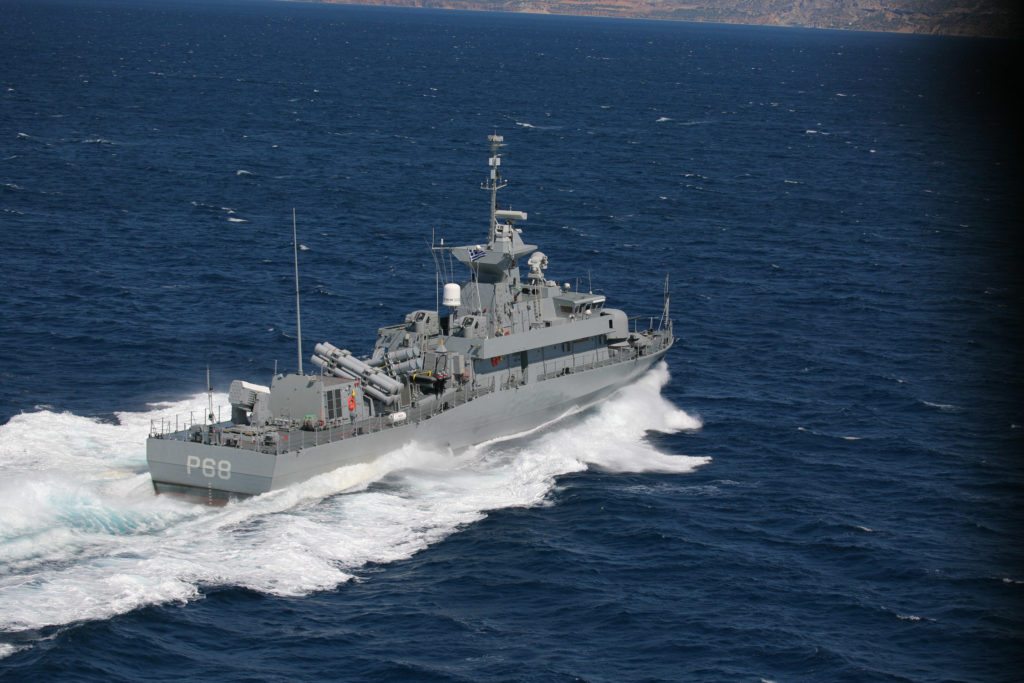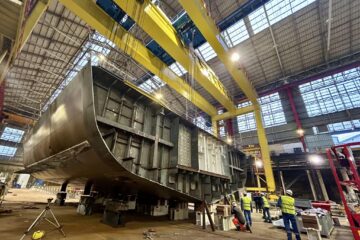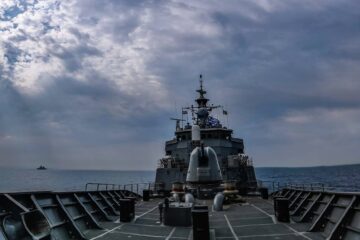The vessel, with hull number P 78, was launched on June 1st 2018 at Elefsis Shipyard. It is named after named Lieutenant Karathanasis who lost his life in the crash of his AB 212 helicopter in January 1996, during the Imia crisis.
Serious financial problems for the shipyard and the Greek state resulted in a huge delay between the construction of the first 5 ships and the last two. The first in class ship was commissioned in December 2005 and there is still one vessel of the class set to be delivered to the Hellenic Navy, probably next year.
HS Ypoploiarchos Karathanasis is pretty much equipped with the same sensors and weapon systems as its sister ships expect for two systems. According to Naval Analyses, the new FACM received a Thales Vigile 100 ESM system in place of the DR 3000 fitted on previous vessels of the class. It is also fitted with a Thales Stir 1.2 EO Mk2 fire control system in place of the Sting (of previous generation).
About Hellenic Navy Roussen-class troubled program

For the record, the Hellenic Navy’s Super Vita program has complex history and spans across many years.
A contract for the construction of three modern missile boats was signed in January 2000. The construction took place at the Elefsis Shipyards, while Vosper Thornycroft (now BAE Systems Maritime) provided the design, logistical support and equipment for the ships. On August, 2003 and September, 2008 options that provided the acquisition of four more vessels were activated with the last ship to be commissioned in 2015.
On September 25, 2008, a 299 million Euro contract was signed between the Greek State and the Elefsis Shipyards for the construction of the two remaining vessels of the class, P-78 and P-79. In the meantime Elefsis was still building some of the remaining vessels According to the contract, the delivery times of the two FACs were 46 months from the start of the contract for the first ship and 52 months for the second.
Due to serious financial problems of the shipyards and the Greek state, as well as a conflict of opinion with BAE Systems, there has been a 10 year delay in the construction of the two ships. When the Elefsis shipyard went bankrupt, the Hellenic navy took over the production line and the salaries of the shipyard workers to finish the construction of the last two ships of the class: The Navy was the manager and it was using the infrastructure and the personnel of the shipyards.
About Roussen-class FACM

The Roussen-class FACM are based a stretched variant of the successful Vita design in used with the navies of Qatar and Oman.
They have a length of 62 meters, a of beam 9.5 meters, a draft of 2.6 meters for a full load displacement of 668 tons. They have a crew of 45 sailors and a maximum speed of 35 knots.
In terms of weapon systems, these FACM are quitted heavily armed for their size: A 76mm main gun, 8x MM40 Block 2 & 3 anti-ship missiles, a RAM surface-to-air missiles launcher and 2x 30mm guns.
First ship of the class P 67 Ypoploiarchos Roussen was launched in November 2002 and commissioned in December 2005. Last ship of the class, P 79 will likely be launched next year. The name of the 6th and 7th vessels are yet to be official announced.
They are fitted with early 2000s sensors and systems (MW08 3D G-band surveillance radar, Mirador EO sensor, Scout MkII radar and Tacticos combat management system all from Thales).






